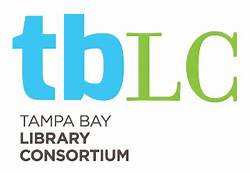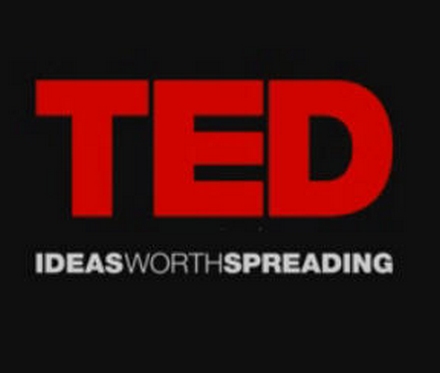Up until recently, my experiences led me to believe that planning, designing, marketing, and facilitating webinars was a process requiring weeks if not months of collaboration. And then came coronavirus pandemic shelter-in-place guidelines, “emergency remote learning,” and a widespread adoption of turning-on-a-dime action to respond to and take advantage of rapidly-changing conditions in nearly every aspect of our daily lives. And from that challenge has come a new understanding of what we can do when we stay in touch with colleagues, collaboratively take advantage of resources we already have in place, and identify and pursue opportunities we otherwise might overlook.
![]() The first of two “webinar-in-a-heartbeat” experiences I’ve had within the past month while “sheltering” in place—it actually feels more like living-dynamically-at-the-speed-of-light-in-place rather than sheltering—is one I recently described on my blog: the experience of seeing that colleagues in the South Florida Chapter of ATD (Association for Talent Development) were looking for presenter-facilitators willing to join and participate in leading a new series of online learning opportunities designed to at least temporarily replace what chapter members have so effectively done face-to-face for many years and accepting the challenge. Thanks to wonderfully collaborative efforts with the chapter member in charge of the series, I was one of the first three trainer-teacher-learners leading online sessions (via Zoom) within the following three weeks. (I’ve also benefitted strongly, since seeing that initial invitation to participate, from joining those highly-interactive online sessions as a learner, and have absorbed a tremendous amount and been absolutely inspired simply by observing and writing about tremendous colleagues in action.)
The first of two “webinar-in-a-heartbeat” experiences I’ve had within the past month while “sheltering” in place—it actually feels more like living-dynamically-at-the-speed-of-light-in-place rather than sheltering—is one I recently described on my blog: the experience of seeing that colleagues in the South Florida Chapter of ATD (Association for Talent Development) were looking for presenter-facilitators willing to join and participate in leading a new series of online learning opportunities designed to at least temporarily replace what chapter members have so effectively done face-to-face for many years and accepting the challenge. Thanks to wonderfully collaborative efforts with the chapter member in charge of the series, I was one of the first three trainer-teacher-learners leading online sessions (via Zoom) within the following three weeks. (I’ve also benefitted strongly, since seeing that initial invitation to participate, from joining those highly-interactive online sessions as a learner, and have absorbed a tremendous amount and been absolutely inspired simply by observing and writing about tremendous colleagues in action.)
Every day seems to bring a new opportunity, and that certainly was the case less than two weeks ago when friend/colleague/collaborator/-co-facilitator and owner of PCI [People Connect Institute] Webinars Andrew Sanderbeck and I met online via Zoom, ostensibly to brainstorm projects we could initiate and offer during the second half of this year—post shelter-in-place. The conversation began as most of our conversations do: talking with and listening to each other about what we are currently doing and how we are responding to our training-teaching-learning landscape. Andrew asked how I was faring in a shelter-in-place world, and I told him that a) it hasn’t been much of an adjustment since I do so much of my work in online environments, and b) that I recognized I am extremely lucky that an abnormally higher-than-usual percentage of my current work had already been scheduled for online environments during the first half of the year. The picture for Andrew was much different: he talked about missing face-to-face encounters; mentioned that online conversations even using the most highly-praised and ostensibly engaging of tools weren’t offering him the same level of satisfaction and pleasure that onsite interactions do; and told me a bit about what he had been finding and reading online.
The clincher identify-and-take-advantage-of-opportunities unexpectedly came while he was telling me about a BBC News article he had found on the topic of “Assumption Reversal”: an approach used by facilitators attempting to foster creativity among those with whom they are working.
“A few years ago, Michael Michalko, a former US army officer, came up with a fascinating idea to sharpen creativity,” Matthew Syed writes in that BBC News article. “He called it ‘assumption reversal’. You take the core notions in any context, subject, discipline and then, well, turn them on their head.
“…suppose you are considering a new taxi company. The first assumption might be: ‘taxi companies own cars’. The reversal would be: ‘taxi companies own no cars’. Twenty years ago, that might have sounded crazy. Today, the largest taxi company that has ever existed doesn’t own cars: Uber. Now we are living through a disruption (you might even call it a reversal) of unprecedented scale….”
“Reversal techniques are typically used by people working in the creative industries to come up with new products or innovations. I wonder if we can all use it to seek out a silver lining or two amid the grey clouds.”
Without even reading the article I just finished quoting, and thinking only about Andrew’s brief description of Assumption Reversal, my mind was already racing.
“You gonna use that?” I immediately ask, and Andrew temporarily appears to be uncertain as to what I am really asking.
It is, I continue, exactly the sort of opportunity we were looking to explore when we set up this particular conversation online. We and many people we know are trying to figure out what the world is going to look like after shelter-in-place ends. We know that trying to predict the future usually produces lousy results, but taking steps to help shape the future can be very productive and rewarding. At a time when so many people are struggling to identify ways to even cope with what to them appears to be a bleak and extremely uncertain future, a workshop or a webinar proposing Assumption Reversal as a potentially useful tool might be a game-changer for some of those people.
Quickly displaying an increasing amount of interest in the possibilities, Andrew asks what I have in mind. I suggest that we could design and develop something for roll-out for late summer or early fall.
“I’m thinking about something a little sooner,” he teases.
“Doesn’t it take a while to set things like that up, schedule them, and get the word out?” I respond with what was meant to be rhetorical rather than real curiosity.
“You forget I own a webinar company,” he coyly answers, obviously relishing my surprise at what he is suggesting.
 Less than two weeks later, he had filled the webinar to the capacity we had set—a maximum of 75 participants, so we could foster high levels of interactivity among the participants; had identified resources including Michalko’s description online of the Reversing Assumptions technique and a Joker News video on “Assumption Reversal in Pandemic Crisis” connecting the process to ideas for responding to our evolving landscape during the coronavirus pandemic; had a waiting list of people interested in attending a similar session; had loaded up the slides on the PCI Webinars site so we had a visually-stimulating set of images to inspire conversation during that hour-long session; and was ready to roll with me for what turned out to be a very stimulating, positive learning experience for all of us.
Less than two weeks later, he had filled the webinar to the capacity we had set—a maximum of 75 participants, so we could foster high levels of interactivity among the participants; had identified resources including Michalko’s description online of the Reversing Assumptions technique and a Joker News video on “Assumption Reversal in Pandemic Crisis” connecting the process to ideas for responding to our evolving landscape during the coronavirus pandemic; had a waiting list of people interested in attending a similar session; had loaded up the slides on the PCI Webinars site so we had a visually-stimulating set of images to inspire conversation during that hour-long session; and was ready to roll with me for what turned out to be a very stimulating, positive learning experience for all of us.
Participants reacted, at the end of the session, with tremendous gratitude for the opportunity we had provided to explore positive, creative action in very challenging times. One of our colleagues who serves as host/producer for PCI Webinars and generally stays in the background during the live sessions became an active and tremendously valuable contributor to the entire conversation. And Andrew and I, once again, walked away having learned quite a bit about how we can best serve our clients, colleagues, and friends in the best as well as the most challenging of times.
–N.B.: This is the ninth in a series of reflections inspired by colleagues’ reactions to the coronavirus and shelter-in-place experiences and our continuing interactions online. For information about scheduling onsite or online versions of “Preparing for an Uncertain Future: Reversing Our Assumptions,” please contact Andrew at andrew@peopleconnectinstitute.com and Paul at paul@paulsignorelli.com.



 Posted by paulsignorelli
Posted by paulsignorelli  I’ve been extraordinarily lucky, through all of this, to have had several projects underway that were
I’ve been extraordinarily lucky, through all of this, to have had several projects underway that were  Some things, we confirmed together through a highly-interactive and collaborative approach, remain constant at a time when
Some things, we confirmed together through a highly-interactive and collaborative approach, remain constant at a time when  Following my own guidance and longtime commitment to
Following my own guidance and longtime commitment to 